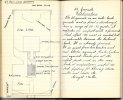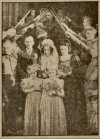Very interesting information, thanks, Jaffa.
The November 1944 Orders of Battle for the Home Guard show that the 105 Warwickshire Home Guard battery was one of six in the Warwickshire area excluding Birmingham, all making up 26 Anti-Aircraft Regiment Home Guard. There were a further six within the city boundary making up 25 Regiment.
The 105 was based in Sutton Coldfield. (Not quite sure precisely where but my own brother-in-law - previously a member of a Birmingham factory unit - served in a battery which was always described as being in Walmley). This battery was, in the Orders of Battle and also in your father's qualification certificate , described as a Rocket Battery, but that isn't to say that there weren't also more conventional weapons within it or hadn't been re-equipped as time went on. It's interesting that, despite apparently serving in an a-a unit which would have occupied all his HG hours, your father was qualifying as an instructor in much of the normal, infantry-type equipment as late as September 1944.
The designation 199/105 was that given to the battery to denote, first, its reference number in Royal Artillery terms and, second, the title by which it was known in the Warwickshire Home Guard. I have to guess at the significance of the Relief number but I suspect it denotes a particular title given to one of several teams of men trained and ready to man the battery as and when their turn came around. (Home Guard men were at that time expected to devote a minimum of 48 hours per month to Home Guard duties and for anti-aircraft duties this necessitated a system requiring much shift-working). All these men would normally have been transferred from nearby existing, general service Home Guard units in the area during 1942 and early 1943; or would have been new, younger recruits only just joining the Home Guard during and after that period and immediately entering a-a service.
(I note that the 26 Anti-Aircraft Regiment was commanded in 1944 by Lt.-Col. T.S. Dick DSO, OBE, whose name has cropped up recently in this thread).
Chris



















